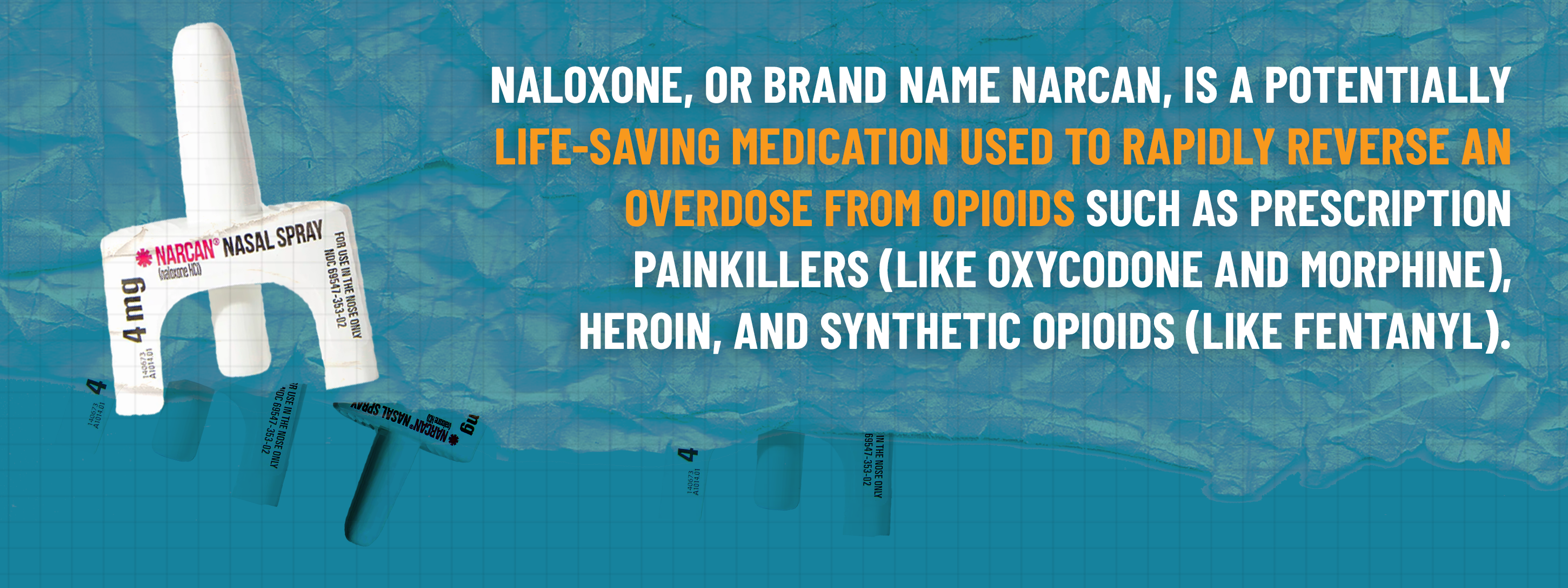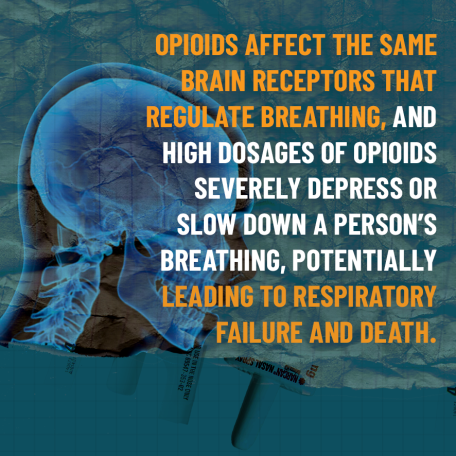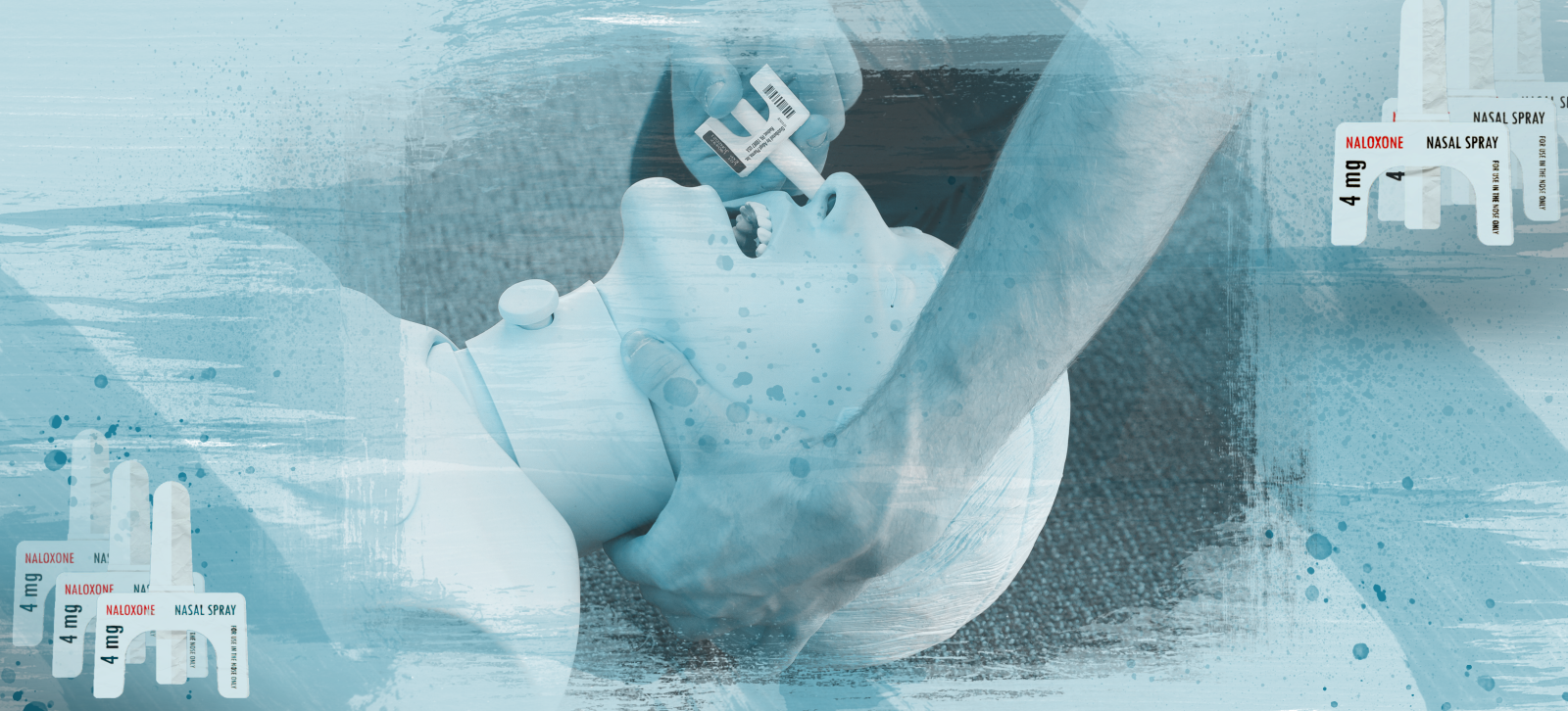Naloxone Myths Debunked
Myth: Naloxone is only available as a needle or injectible
Fact: Naloxone, along with its brand name Narcan, is available in different forms. The most user-friendly and widely available form of Naloxone is in a nasal spray format. It is sprayed into the nostrils and doesn’t require any needles or injections. There is also an injectable form, which can be administered using a syringe; however, this is typically used by medical professionals. With opioid overdoses on the rise, knowing the ins and outs of Naloxone, often referred to by its brand name Narcan, is vital to saving lives. In this blog, we’ll debunk 12 common myths about Naloxone and address frequently asked questions to create a clear understanding and ensure you have the info you need.

Myth: Naloxone is an allergy medication.
Fact: No, Naloxone is not an allergy medication. It is specifically designed to reverse the effects of an opioid overdose by blocking the effects of opioids on the brain and restoring normal breathing.

Myth: Naloxone will hurt someone if they are not overdosing on opioids.
Fact: If someone is given Naloxone and they are not experiencing an opioid overdose, the drug will not harm them. Naloxone specifically targets opioid receptors in the brain and works by reversing the effects of opioids. If no opioids are present in the person’s system, Naloxone will have no effect.
Myth: Naloxone will have harmful effects if someone has taken other drugs.
Fact: If the person has taken a combination of drugs, which includes opioids, Naloxone will only reverse the effects of the opioids. It will not affect non-opioid substances or cause harm. For example, if someone has used a mix of heroin (an opioid) and cocaine (a stimulant), Naloxone will reverse the effects of the heroin but not the cocaine.

Myth: You only need to administer Naloxone once.
Fact: The number of times Naloxone needs to be administered can vary depending on a number of factors.
Typically, a single dose of Naloxone is administered first. After administering the initial dose, it’s crucial to wait and observe the person’s response. If there is no response within 2 to 3 minutes, an additional dose may be needed. Continue providing additional doses every 2 to 3 minutes until the person breathes normally or emergency help arrives.
It’s also important to know that Naloxone is fast-acting and wears off after 30 to 90 minutes. Because certain opioids, such as fentanyl, may remain in the body longer than 90 minutes, overdose symptoms can return and an additional dose of Naloxone may be needed at that point.
Myth: You can get in trouble for administering Naloxone.
Fact: No, you will not get in trouble for administering Naloxone. Many places have “Good Samaritan” laws that protect individuals who act in good faith to help someone in an overdose situation. Your intention to help save a life is what matters.
Myth: I don’t need to carry Naloxone because I don’t use drugs.
Fact: Even if you don’t use drugs, carrying Naloxone is recommended. Overdose emergencies can happen to anyone, and having Naloxone on hand could help save a life. It’s a safety measure for everyone, not just those who use substances. Pick up Naloxone just like you would your keys or phone, whether you’re going to a football game, the grocery store, a party, or anywhere else — keep it in your pocket or purse!
Myth: You can’t easily get Naloxone.
Fact: Naloxone is available at most pharmacies without a prescription. You can also check with local organizations that have a Naloxone distribution program, such as a local opioid or overdose safety coalition or a syringe services program. Learn more about where to get Naloxone.
Myth: Naloxone encourages substance use.
Fact: A common myth around Naloxone is that it will encourage substance use; however, research has shown that it does not increase drug use.
Myth: Naloxone is only safe to give to adults.
Fact: Naloxone can be given safely to people of all ages, from infants to older adults.
Myth: You don’t need to call 911 if you administer Naloxone.
Fact: You should always call 911 in an overdose situation, even if you have administered Naloxone. Emergency responders are trained to handle these situations and can provide additional medical care and support. Naloxone can reverse the overdose, but professional medical help is crucial.
Myth: Naloxone is illegal to carry.
Fact: Anyone can legally carry Naloxone. If you are searched by police or school administrators, showing that you have Naloxone is generally seen as a responsible action. It’s a tool for safety and not something that should get you in trouble.
Myth: You have to be 18 to purchase or carry Naloxone.
Fact: There is no age limit to purchase or carry Naloxone. It is available to anyone who needs it, and its accessibility is part of its effectiveness in preventing overdose deaths.
Myth: Only a professional can tell if someone has overdosed.
Fact: If there’s one myth to bust, it’s this one. Anyone can become aware of and learn to recognize the signs of an overdose, as well as administer Naloxone. If you suspect an overdose, administer Naloxone, call 911, and stay with the person until help arrives. The signs and symptoms of an opioid overdose can include:
- Slow or stopped breathing
- Unresponsiveness
- Blue or grayish skin, lips, or nails
- Cold, clammy skin
- Pinpoint pupils
- Limp body
Naloxone is one of the best tools we have to reduce the number of opioid overdose deaths. By understanding and debunking these myths, we hope to encourage more people to carry Naloxone and be prepared to act in an emergency. Remember, your actions can save a life. Stay safe and informed. To learn more about Naloxone, check out the blog ‘What is Naloxone and Who Should Carry It’.
